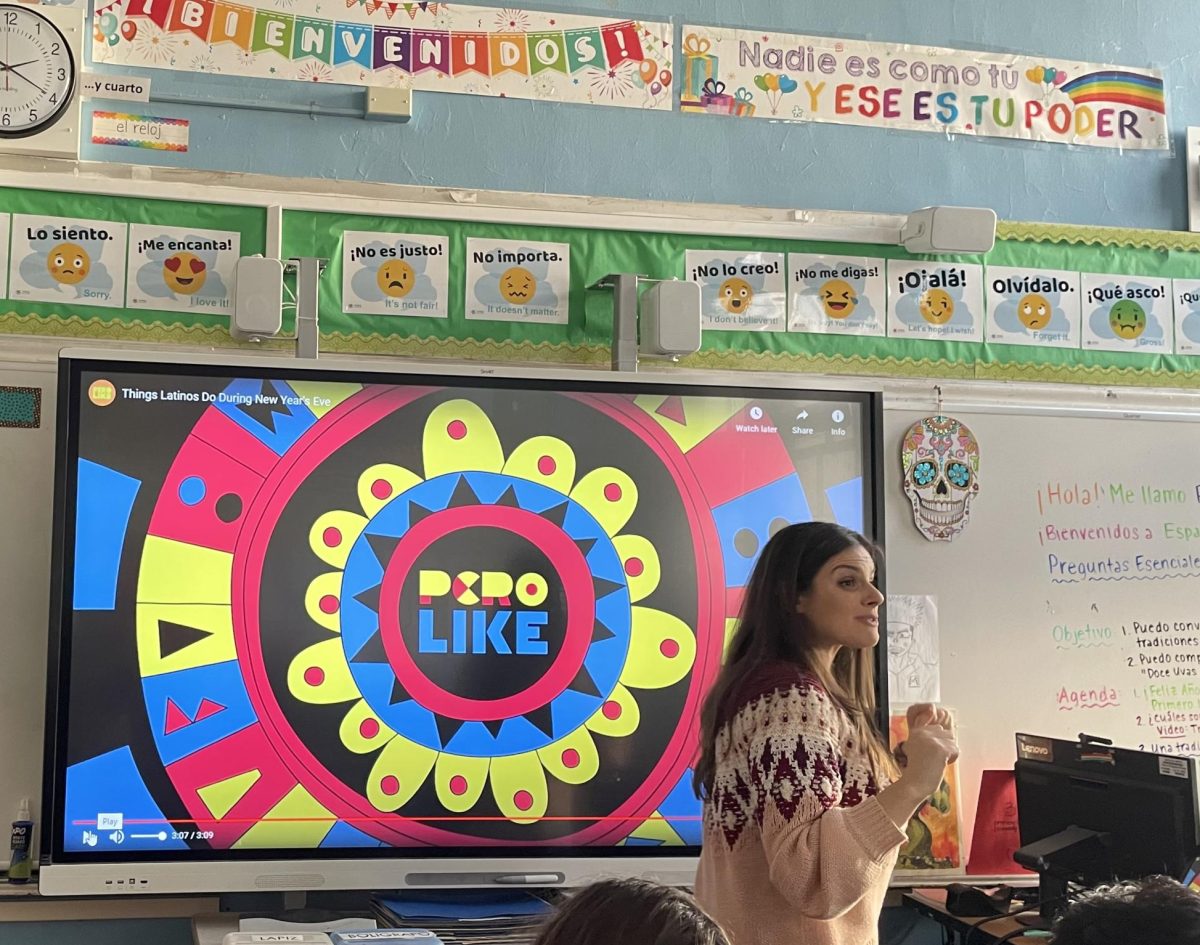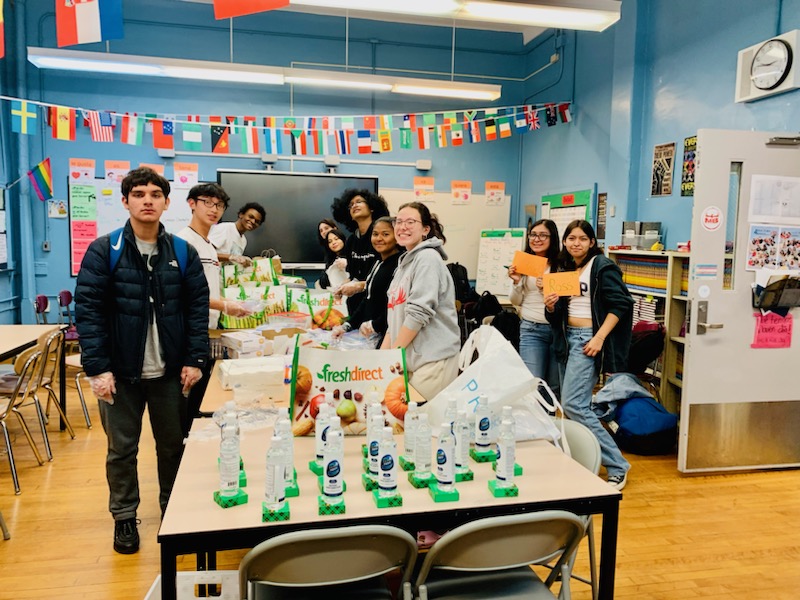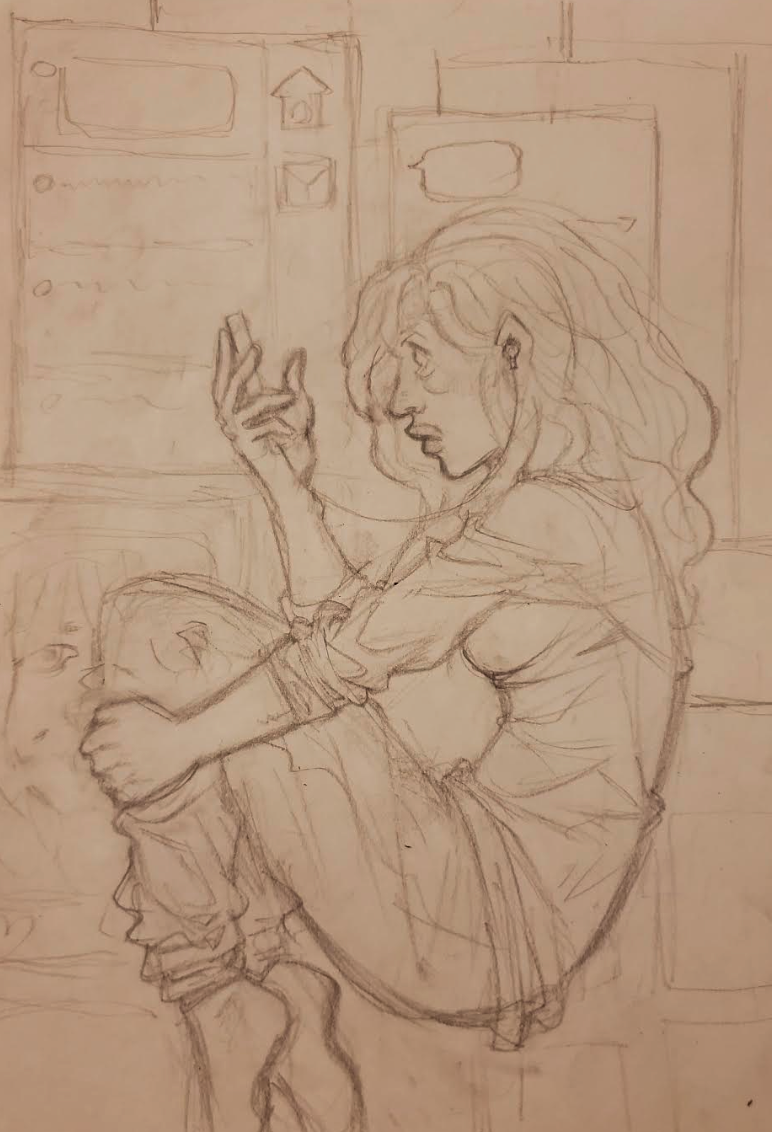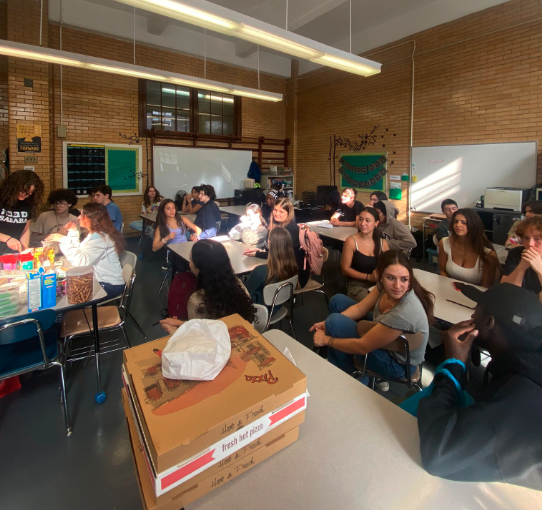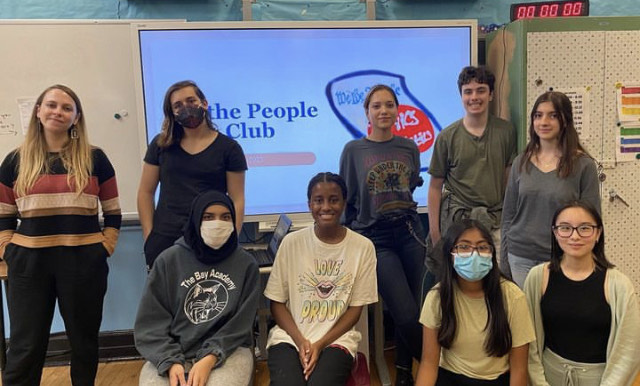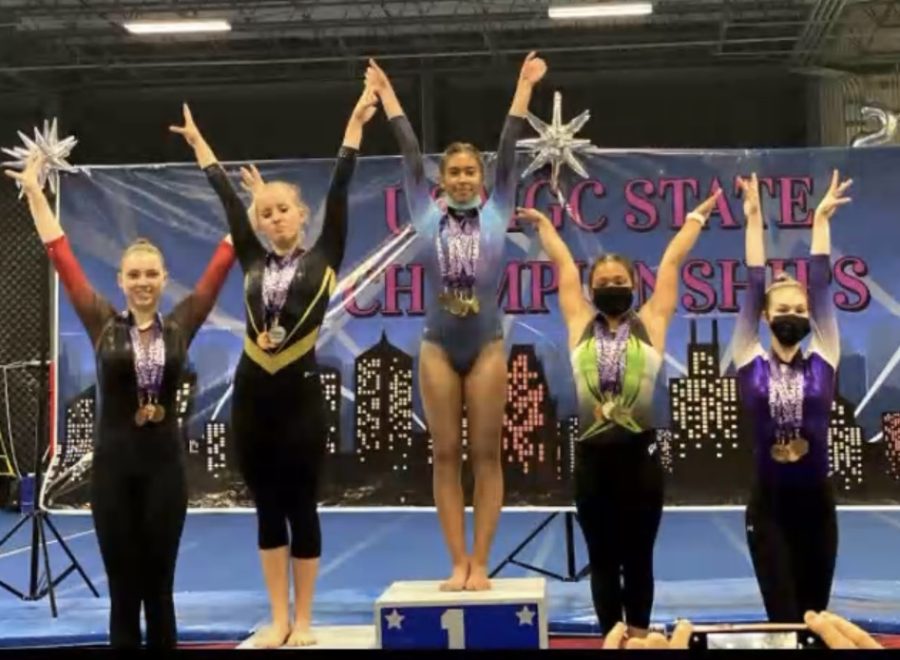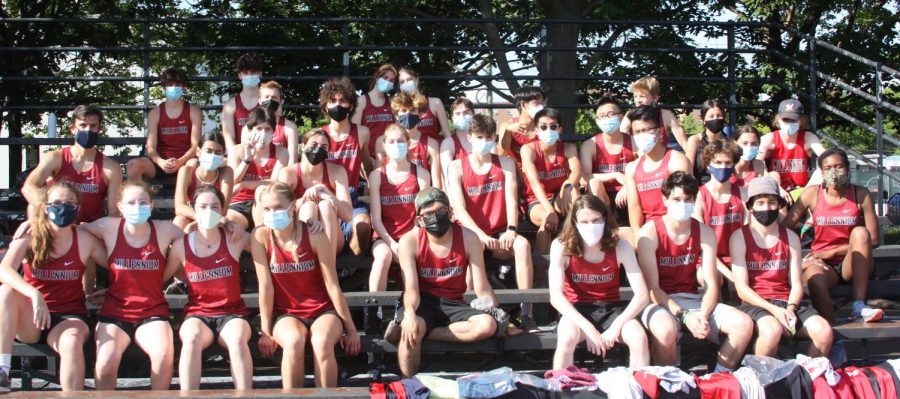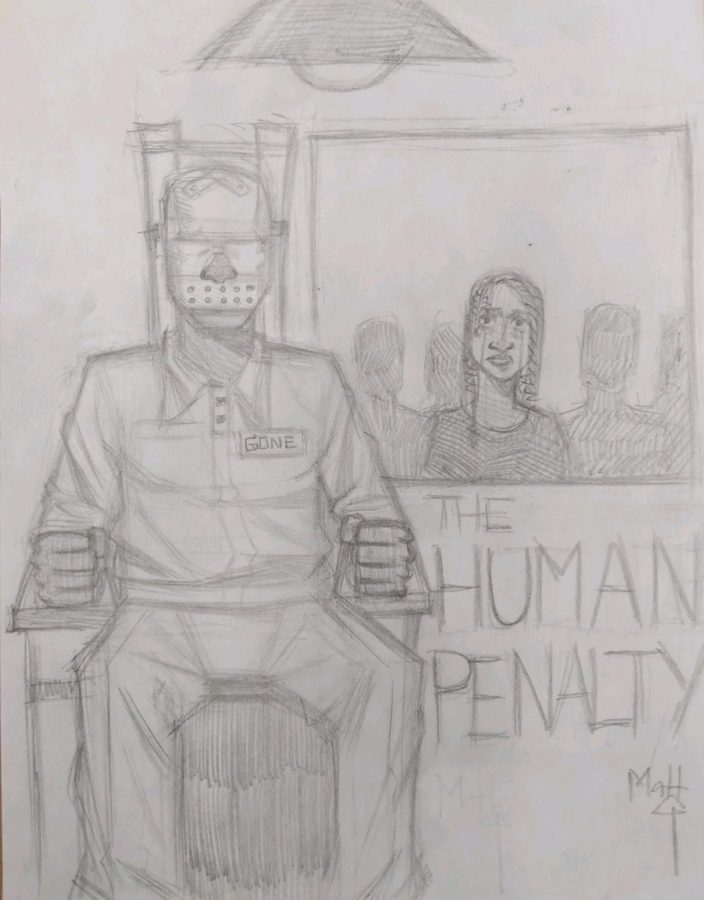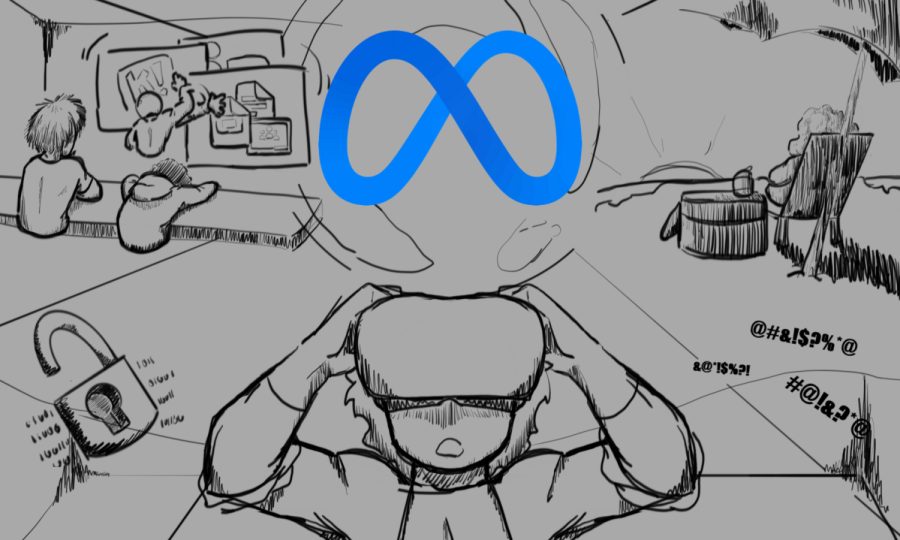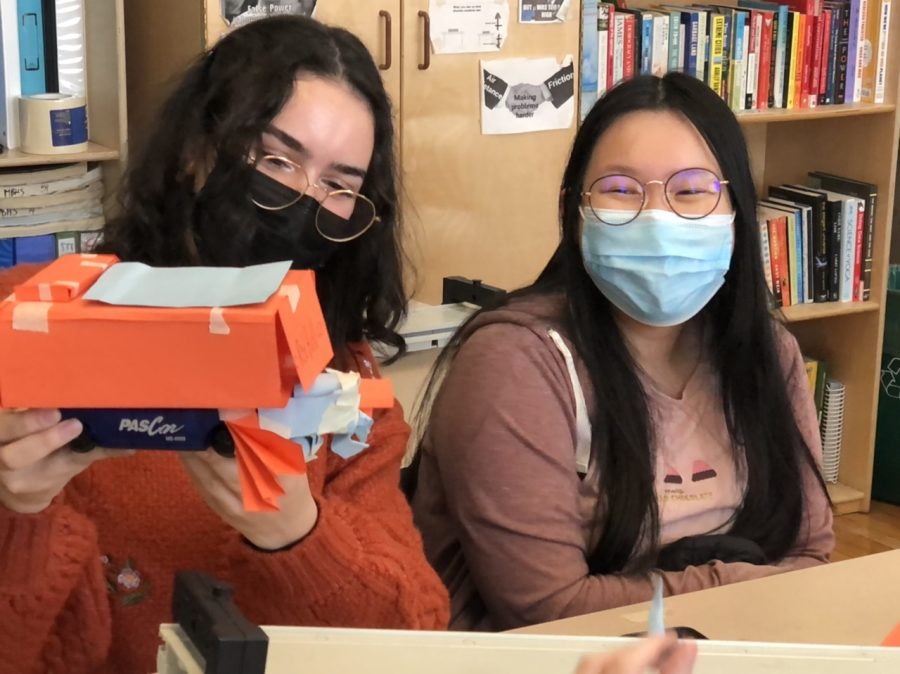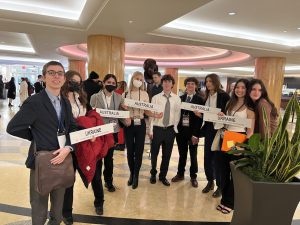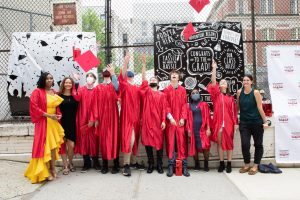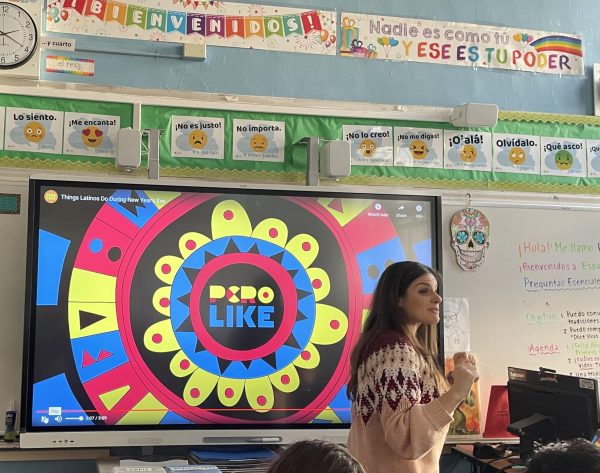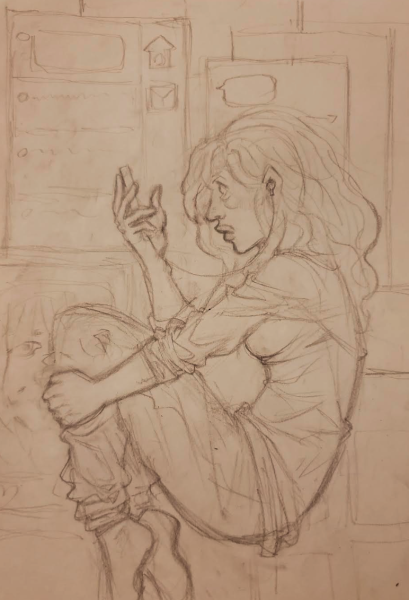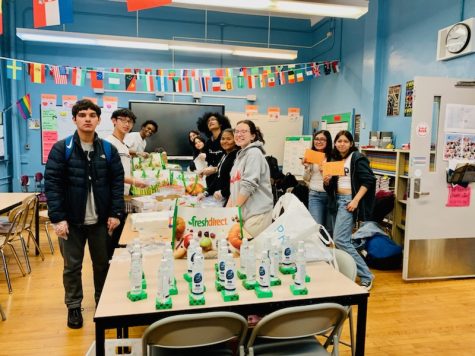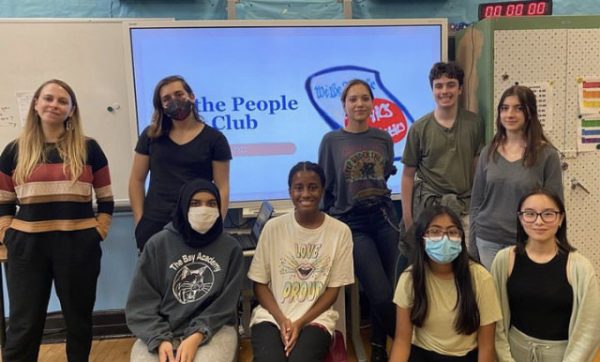In da Club: Extracurriculars Make Their In-Person Return
Raneem Lamnii and Angela Liu pose with the crash test car they created in Maker Club.
June 27, 2022
After a tumultuous year of hybrid and remote learning, where classes and clubs convened via Zoom, students across the city returned to buildings last fall and were again able to enjoy the perks of in-person learning: interacting with peers, getting to learn in a shared physical space, and engaging in activities that have reminded us why we missed each others’ company. Although for some, the return to a 7-hour learning day presented its own struggles, most students welcomed the sense of normalcy that returned to MBHS as laughter could be heard echoing in the school hallways and teachers returned to delivering lessons on the SmartBoard. At MBHS, students could again build community by attending after school clubs in person; those founded during the pandemic had the opportunity to do so for the first time.
The Screen Team: The Film Club Looks To Make Movie Magic
The film club, founded by Livia Baldeschi-Ballerini and Susanna Ferguson, is one of the clubs that got to experience in-person activities for the first time after meeting exclusively remotely last year. When asked how the shift has affected their planning for the club, Livia says, “It is a lot less stressful and a lot more interactive for everyone involved.” The duo no longer worries that “someone can’t see or hear properly.”
In the club, currently advised by Ms. Nadal, students learn about the process of filmmaking and analyze the creative choices that go into a film. At a typical club meeting, students will focus on a certain visual style–noir or slapstick comedy, say–and suggest film titles that adhere to that theme. Before starting a screening, the group will gather around for a related activity. Susanna says that they often do “notebook activities …where we give the club members a prompt and they have to either draw something out or write down a thought or idea relating to the prompt.” These activities are incorporated into the lesson before, during, and after watching a film.
Now that the group meets in person, members plan to work together to make a film. Livia mentions how “[last year, w]e couldn’t film anything as a group,” but she is excited that “we might be able to do it this year if the club members are willing to.” The film-making process will be guided and driven by the students, with the intent that club members will bring to life whatever kind of story they desire. Filming has not officially begun, but the club studies films and cinematography weekly to prepare. Susana emphasizes that they aim to “do a lot of film viewings and observations before really starting on any movie-making.” So far, the students have watched the films Daisies, Rear Window, The Prestige and Platform. By the end of the year, the group hopes to host a screening of their project which will be open to all MBHS students.
Maker Club Engineers A Good Time
Another returning club that had the opportunity to meet for the first time in person at Millennium this year is the Maker Club. A duo of science teachers, Ms. Hochstatter (physics) and Mr. Petrone (chemistry) oversee the club. The club began as part of an NYU Research project aiming to give students opportunities for hands-on learning in clubs–specifically engineering–and is funded through the National Science Foundation. In their meetings, the students design and create functional objects, sometimes using 3-D printers while learning the mechanics behind the production process.
Each student in the club kickstarted the year by making paper journals that were able to be customized to each student’s liking with craft materials like stickers. Hochstatter notes that, in addition to serving as a product of the club, “the purpose of the journal is to record all the ideas for things that [students] want to make.”
During one recent meeting, group members participated in what was an engineering challenge: to build the tallest possible free-standing tower out of 10-26 uncooked spaghetti strands and a single marshmallow. Members split into small groups and were tasked with constructing their structure under a time constraint, topping it with the crowning marshmallow without toppling the tower, Jenga-style. In December, students made LED holiday cards which featured flashing lights in festive designs.
One activity students had begun during online learning which they continue with during in person meetings is the use of an online source called Tinker-Cad where members can model their own 3-D figures. Ms. Hochstatter notes that students could actually create these figures now that the group has secured a 3-D printer. Club members take advantage of the fact that they can now meet in person “to break [sessions] up with activities where [members] have to work together,” observes Hochstater. Students have the option to work collaboratively or individually on their projects.
Now that the makers can meet in person, the members are able to access hands-on building experiences. These interactive activities enhance their understanding of the mechanics behind the designs of everyday items all around us.
The in person club sessions have attracted an increased level student interest. Now that students can see the 3-D printer working its magic, about 12-20 students attend each meeting. The club’s growth allows for bigger groups to split up in order to experiment and troubleshoot mechanical limitations of their designs together. One example of this is the circuit activity, where students built batteries. “We couldn’t do that last year or do it very well because it all had to be [executed] through simulation,” says Ms. Hochstatter. Yet another case where the return of in person learning has provided more opportunities for hands-on learning that would not have been possible in a remote setting.
